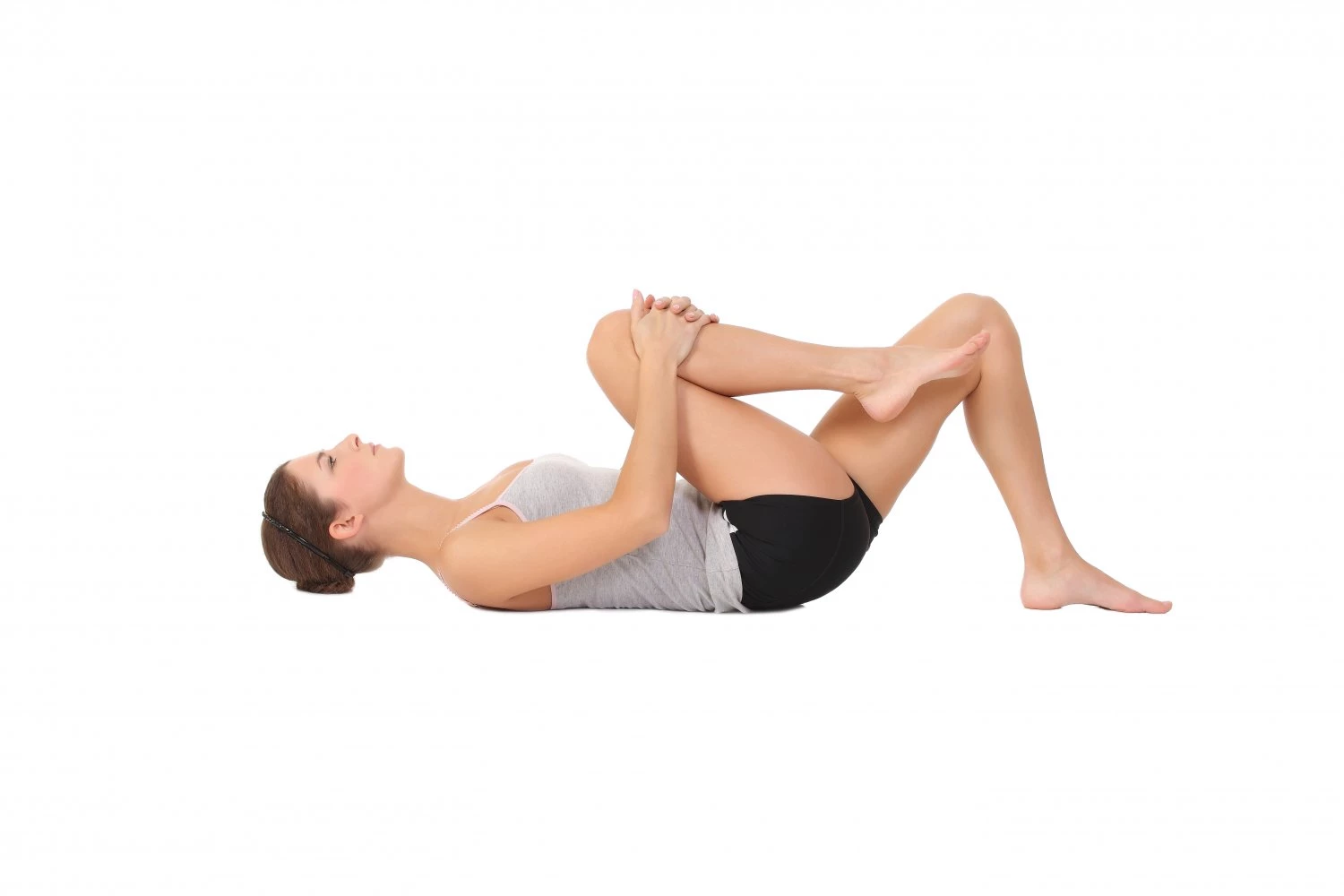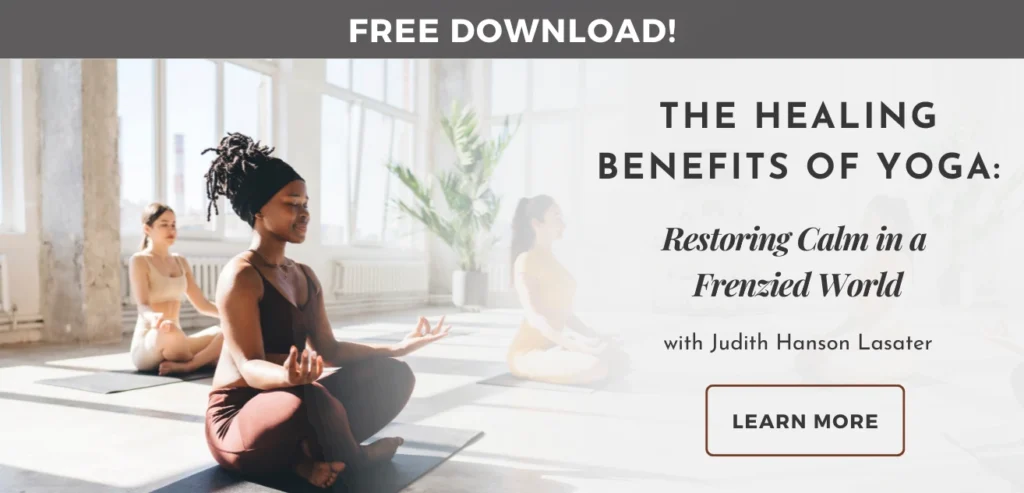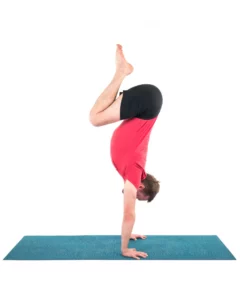Are You Making This Common Stretching Mistake in Yoga?

Early in my days of teaching yoga teacher training, a student who had been teaching in a fitness studio asked a very important question. She explained that one of her female students became unusually flexible prior to ovulation, probably because of the presence of “relaxin,” a hormone that relaxes the ligaments that hold together the various joints in the pelvis—hip joints, sacroiliac joints and pubic symphysis. The teacher said that she encouraged the student to move farther into poses at that period in her cycle since she was already more flexible. “Should I continue doing this?” she asked.
Some Ligaments of the Hip Joint
Twenty years ago I would have said yes. In fact, I did encourage women to take advantage of their relaxin-induced flexibility during pregnancy. No more.
Fortunately, the third(!) time I took anatomy, the importance of understanding the structures of ligaments and tendons finally sank in. (For clarification, ligaments connect bone to bone in our joints; tendons connect muscle to bone at the joints.) Ligaments and tendons are constructed of dense, regular, collagenous, connective tissue. Ligaments are dense, fibrous tissues that are designed to limit the movement of our joints.
Please repeat this three times: Ligaments are designed to limit the movement of our joints.
This is also very important: Ligaments and tendons are considered to be avascular, i.e. containing no blood flow of their own. Oxygen and other nutrients diffuse into ligaments and tendons from cells outside the tissues. Because these structures need to be strong, they are largely comprised of collagen fibers with some elastin to create a small amount of stretch
Don’t Sprain Your Body with Yoga!

Ligamentous Tissue
Have you ever sprained an ankle? How long did it take to heal, and did it ever return to its former stability? When you sprain your ankle, you overstretch ligaments. Because the tissue is avascular, it does not heal as quickly as muscle does. Ligaments do not have the “memory” that muscle tissue has. When you overstretch ligaments, there’s a good chance they will not bounce back to their former length.
If ligaments are meant to protect joints by limiting their movement, continually overstretching joints can lead to joint instability over time. I know a number of serious practitioners who are now in their 50s—including myself—who regret having overstretched our joints back in the day. All too many longtime practitioners now own artificial joints to replace the ones they overused. Those fancy yoga poses way back when were not worth their consequences.
Flexible people have a much stronger tendency to overstretch joints than stiffer people do. Armed with the pervasive “no pain, no gain” philosophy, we flexies tend to keep stretching until we feel pain. Because our muscles are loose enough that we don’t feel much there, we collapse into our joints where there’s plenty of sensation. Not only does this overstretch our ligaments, it causes us to hang or push into our joint capsules, which can wear down the cartilage that protects our joints and keeps them articulating smoothly.
Optimize Flexibilty in Your Yoga Practice? The Counterintuitive Answer
My advice to the student’s question was to encourage her student to protect her joints, to do less rather than more. Counterintuitive, I know, especially when many asana classes encourage people to push past their limits and rock those fancy poses. If a person’s ligaments are made unstable by relaxin—or by excessive heat or any other outside factor—that creates a situation of imbalance in the joints. You wouldn’t encourage a muscle-bound yoga student to lift more weights and stiffen up. Equally, a too-flexible student doesn’t benefit from becoming even more flexible. Too much flexibility is just as unhealthy is too much stiffness. Balance is what we’re going for in asana practice. Familiarize yourself with what normal range of motion looks like.
By all means, do practice to maintain flexibility in your muscles, and remember that it takes 30 seconds of continuous stretching for your muscle spindle neuron to actually allow your muscle to habituate to a new, longer length. So take your time, and be gentle in your yoga practice. When you feel tissue stretching along the bones—as long as that stretch is not extreme—it’s probably healthy. When you feel discomfort in a joint, please stop doing what you’re doing. And please protect your students’ future joints by teaching them the difference.
For more healthy yoga practice tips and hip joint information read this Interview with Judith Hanson Lasater: The Hip Joint in Yoga Asanas-How Individual Differences Affect Your Practice
Study healthy yoga practice tips and joint health with YogaUOnline, enroll in Dr. Loren Fishman and Ellen Saltonstall’s, Yoga for Joint Health: Keys to Staying Mobile and Agile All Life Long.
Also, read...
No Muscle Is an Island – Are You Making This Common Strength Training Mistake?
Discovering the Living Body: A Yoga Teacher’s Revolutionary Insight on Fascia
The Fascia Connection: Tom Myers on How Postural Habits Get Locked into Our Fascial System
Related courses

Charlotte Bell began practicing yoga in 1982 and began teaching in 1986. She was certified by B.K.S. Iyengar in 1989 following a trip to Pune. In 1986, she began practicing Insight Meditation with her mentors Pujari and Abhilasha Keays. Her asana classes blend mindfulness with physical movement. Charlotte writes a column for Catalyst Magazine and serves as editor for Yoga U Online. She is the author of two books: Mindful Yoga, Mindful Life, and Yoga for Meditators, both published by Rodmell Press. She also edits Hugger Mugger Yoga Products’ blog and is a founding board member for GreenTREE Yoga, a non-profit that brings yoga to underserved populations. A lifelong musician, she plays oboe and English horn in the Salt Lake Symphony and the folk sextet Red Rock Rondo whose 2010 PBS music special won two Emmys.



